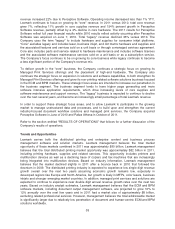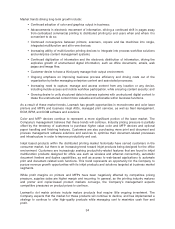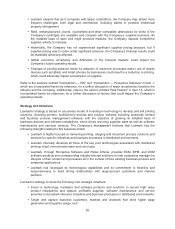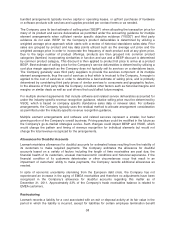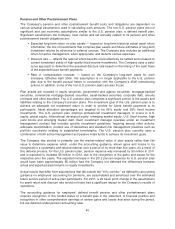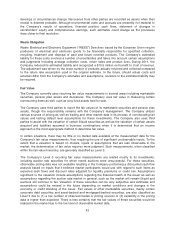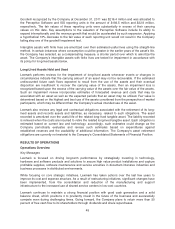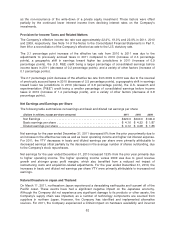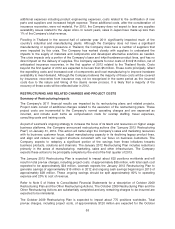Lexmark 2011 Annual Report Download - page 47
Download and view the complete annual report
Please find page 47 of the 2011 Lexmark annual report below. You can navigate through the pages in the report by either clicking on the pages listed below, or by using the keyword search tool below to find specific information within the annual report.Nonrecurring, nonfinancial fair value measurements are most often based on inputs or assumptions
that are less observable in the market, thus requiring more judgment on the part of the Company in
estimating fair value. Determination of the most advantageous market (when no principal market
exists) and the highest and best use of an asset from the perspective of market participants can result
in fair value measurements that differ from estimates based on the Company’s specific intentions for
the asset.
See Notes 2 and 3 of the Notes to the Consolidated Financial Statements in Part II, Item 8 for
information regarding the Company’s fair value accounting policies and fair value measurements,
respectively. Refer to Note 17 of the Notes to the Consolidated Financial Statements in Part II, Item 8
for information regarding pension plan assets.
Other-Than-Temporary Impairment of Marketable Securities
The Company records its investments in marketable securities at fair value through accumulated other
comprehensive earnings in accordance with the accounting guidance for available-for-sale securities.
Once these investments have been marked to market, the Company must assess whether or not its
individual unrealized loss positions contain other-than-temporary impairment (“OTTI”). If an unrealized
position is deemed OTTI, then the unrealized loss, or a portion thereof, must be recognized in
earnings. The Company’s portfolio is made up almost entirely of debt securities for which OTTI must
be recognized in accordance with the amended FASB OTTI guidance that was first effective in the
second quarter of 2009. The model in this guidance requires that an entity recognize OTTI in earnings
for the entire unrealized loss position if the entity intends to sell or it is more likely than not the entity
will be required to sell the debt security before its anticipated recovery of its amortized cost basis. If the
entity does not expect to sell the debt security, but the present value of cash flows expected to be
collected is less than the amortized cost basis, a credit loss is deemed to exist and OTTI shall be
considered to have occurred. However, in this case, the OTTI is separated into two components, the
amount representing the credit loss which is recognized in earnings and the amount related to all other
factors which is recognized in other comprehensive income under the new guidance. See Note 2 of the
Notes to the Consolidated Financial Statements in Part II, Item 8 for more details regarding this
guidance. The Company’s policy considers various factors in making these two assessments.
In determining whether it is more likely than not that the Company will be required to sell impaired
securities before recovery of net book or carrying values, the Company considers various factors that
include:
• The Company’s current cash flow projections,
• Other sources of funds available to the Company such as borrowing lines,
• The value of the security relative to the Company’s overall cash position,
• The length of time remaining until the security matures, and
• The potential that the security will need to be sold to raise capital.
If the Company determines that it does not intend to sell the security and it is not more likely than not
that the Company will be required to sell the security, the Company assesses whether it expects to
recover the net book or carrying value of the security. The Company makes this assessment based on
quantitative and qualitative factors of impaired securities that include a time period analysis on
unrealized loss to net book value ratio; severity analysis on unrealized loss to net book value ratio;
credit analysis of the security’s issuer based on rating downgrades; and other qualitative factors that
may include some or all of the following criteria:
• The regulatory and economic environment.
• The sector, industry and geography in which the issuer operates.
43


